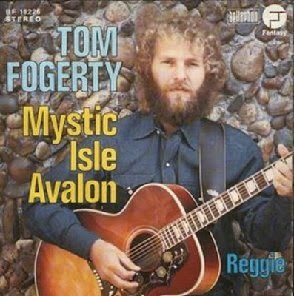
The word deviled, in reference to food, was in use in the 18th century, with the first known print reference appearing in 1786. In the 19th century, it came to be used most often with spicy or zesty food, including eggs prepared with mustard, pepper or other ingredients stuffed in the yolk cavity. Similar uses of "devil" for spiced foods include deviled ham and fra diavolo sauce (from the Italian word for devil).
At church functions in parts of the Southern and Midwestern United States, the terms "stuffed eggs", "salad eggs", and "dressed eggs" are used instead, due to a word taboo against mentioning the Devil in certain denominations of Christianity.
The deviled egg can be traced back to ancient Rome, where boiled eggs were seasoned with spicy sauces and served as a starter meal during gatherings and feasts. Serving eggs while entertaining guests was so common for wealthy Romans, they even had a saying for it, “ab ova usque ad mala”, meaning “from eggs to apples”, or from the beginning of a meal to the end.
Recipes for hard-boiled eggs stuffed with herbs, cheese and raisins can be found in the cookery texts of medieval European cuisine.
The earliest known recipe for stuffed eggs, and the one that most closely resembles the modern-day deviled egg, is believed to have been written in the Andalusian region of Spain during the 13th century. According to the English translation of a recipe found in an unnamed 13th century Andalusian cookbook, boiled egg yolks were mixed with cilantro (coriander), pepper, and onion juice, then beat with murri (a sauce made of fermented barley or fish), oil and salt. The mixture was then stuffed into the hollowed-out egg whites, and the two halves of the egg were fastened back together with a small stick and topped with pepper.
The earliest known American recipe for deviled eggs was printed in the Montgomery Advertiser, a local news publication in Montgomery, Alabama, in 1877. The first known recipe to suggest the use of mayonnaise as an ingredient in deviled eggs was in the 1896 version of an American cookbook named The Boston Cooking School Cook Book by Fannie Farmer.
In the United States, deviled eggs are a common dish that are typically served as hors d'oeuvres or appetizers during gatherings and parties. The eggs are boiled, cooled, shelled, and then sliced in half. The yolk is then removed and mixed with other ingredients, such as mayonnaise, mustard, vinegar, pickle relish, and other spices and herbs. It is then blended into a smooth paste which is used to fill the hollowed-out egg whites. They are generally served cold and are often dusted with paprika. The earliest known American recipe for deviled eggs was printed in the Montgomery Advertiser, a news publication in Montgomery, Alabama, in 1877. The first known recipe to use mayonnaise as an ingredient in deviled eggs was in the 1896 version of an American cookbook named The Boston Cooking School Cookbook by Fannie Farmer. In this early recipe, the mayonnaise was recommended as a binding agent for the yolk mixture. Deviled eggs have been a popular dish in the United States dating as far back as the 1920s. In 1923, Wanda Barton suggested in her newspaper column, “Home-Making Helps”, to save egg cartons because “they are fine for carrying boiled or deviled eggs.” By the 1940s, deviled eggs had become a staple food at picnics, parties and gatherings in the United States. According to an online survey commissioned by McCormick in 2019, nearly 61 percent of Americans planned to make and/or eat deviled eggs during Easter Sunday of that same year.
In many European countries, especially Belgium, France, the Netherlands and Germany, a variation is served known as "Russian eggs". This consists of eggs cut in half, served with vegetable macédoine and garnished with mayonnaise, parsley and tomato. Contrary to what the name might suggest, the dish does not originate in Russia; its name derives from the fact that the eggs are served on a bed of macédoine, which is sometimes called "Russian salad".
In France, the dish is called œuf mimosa ("mimosa egg", named after the appearance of the mimosa tree); in Hungary, töltött tojás ("stuffed egg") or kaszinótojás ("casino egg"); in Romania, ouă umplute ("stuffed eggs"); in Poland, jajka faszerowane ("stuffed eggs"); in the Netherlands gevuld ei ("stuffed egg"); in Sweden fyllda ägg ("stuffed eggs"); on the island of Malta bajd mimli ("stuffed eggs"). In parts of South America, it is called huevos a la peruana ("Peruvian eggs").
In Sweden, the deviled egg (Fyllda Ägghalvor) is a traditional dish for the Easter Smörgåsbord, where the yolk is mixed with caviar, cream or sour cream, optionally chopped red onion, and decorated with chopped chives or dill, perhaps with a piece of anchovy or pickled herring. In French cuisine, the other ingredients are most likely to be pepper and parsley. In Hungarian cuisine, the yolks are mashed and mixed with white bread soaked in milk, mustard and parsley, often served as an appetizer with mayonnaise, or as a main course baked in the oven with Hungarian sour cream topping and served with French fries. Other common flavorings of the yolks in German cuisine are anchovy, cheese and caper.
- 2 tablespoons vegetable oil
- 2 tablespoons chopped onion
- 1 1/2 cups uncooked long-grain white rice
- 3 cups chicken broth
- 1 (15-ounce) can black beans, drained and rinsed
- 1 1/2 cups frozen corn
- 1 cup fresh salsa
- 1 teaspoon cumin
- 2 tablespoons chopped cilantro
- In a large skillet over medium heat, heat oil until hot. Stir in onion and cook 3 minutes or until tender.
- Add rice and continue to cook until rice begins to brown. Add chicken broth; reduce heat to low, cover, and simmer 15 to 20 minutes or until rice is tender.
- Stir in black beans, corn, salsa, and cumin; cook another 5 minutes or until heated through. Stir in cilantro and serve.


Throughout the history of the state, the blending of race and culture have resulted in the Delta’s own unique flair that brings visitors from around the world seeking to taste their food, hear their music and see their style.
When French explorers first arrived, several diverse tribes populated the area. Many of their population were decimated by disease and war. Natchez, Choctaw or Chitimacha descendants still survive today.
In 1803, Louisiana became territory when the United States completed negotiations with France for the 828,000 mile Louisiana Purchase. The first of 15 states to be carved out of the region, Louisianna entered the United States in 1812.
Within its mysterious gulf, Louisiana holds the secrets of pirates, conflicts of slavery and the paths of progress. The bayou teems with life and stories untold.
Louisiana epitomizes the phrase “melting pot” probably more than any other state. Throughout the history of the state, Native American, French, Spanish, German, African, Irish and Caribean cultures have blended in a variety of ways creating a diverse and distinct culture in the bayou. From the food to the language, the music and history, Cajun (French Canadian or Acadian), Creole (European, African, Caribbean or Spanish mixed ancestry) and even the landscape impact the enchantment that is Louisiana.
Alice Heine - Princess - (February 10, 1858 - December 22, 1925)
Sarah Breedlove - Entrepreneur - (December 23, 1867 - May 25, 1919)
Edith Loeber Ballard - Physician - (August 8, 1875 - December 23, 1948)
Buddy Bolden - Musician - (September 6, 1877 - November 4, 1931)
Louis Armstrong - Musician - (August 4, 1901 - July 6, 1971)
Truman Capote - Author - (September 30, 1924 - August 25, 1984)
Ella Brennan - Restaurateur - (November 27, 1925 - May 31, 2018)
Fats Domino - Musician & Singer/Songwriter - (February 26, 1928 - October 24, 2017)
Jerry Lee Lewis - Singer/Songwriter - (September 29, 1935 - October 28, 2022)
Paul Prudhomme - Chef - (July 13, 1940 - October 8, 2015)
Richard Simmons - Businessman/Comedian - (July 12, 1948 - )


















1 comment:
So glad out enjoying loved ones!! Always enjoy your posts. So much wonderful info. Hope you are doing ok. Think of you often up in OR. I am still doing what I can. One day at a time my high school friend ♥️♥️
Post a Comment